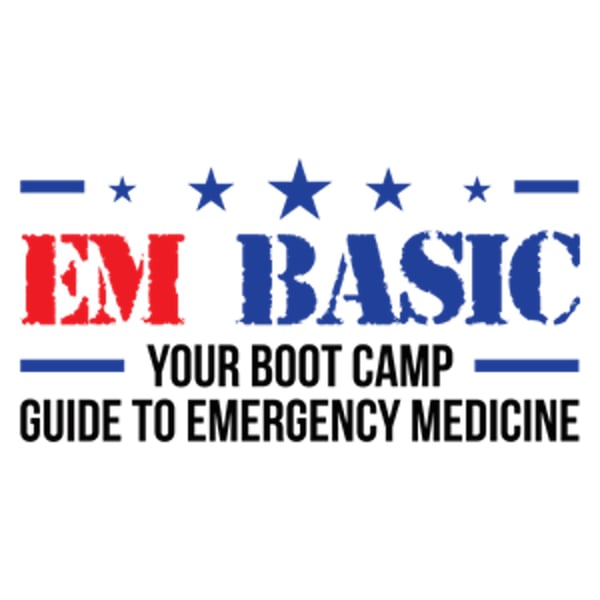Stroke and Transient Ischemic Attack (TIA)
EM Basic
EM Basic LLC
4.6 • 665 Ratings
🗓️ 27 July 2012
⏱️ 32 minutes
🧾️ Download transcript
Summary
In this episode, we will discuss the diagnosis and treatment of stroke and transient ischemic attack (TIA). The ED is the front line in stroke care so we need to know how to work up this chief complaint. We'll go over how to recognize the signs and symptoms of a stroke, how to get a rapid and complete history, how to screen patients for contraindications to thrombolytics, and how to catch a few stroke mimics.
Transcript
Click on a timestamp to play from that location
| 0:00.0 | This is Steve Carroll for the Am Basic podcast. |
| 0:03.7 | Today we're going to talk about stroke and transient ischemic attack, or TIA. |
| 0:08.3 | In the ED, we are the front line in dealing with stroke in TIA, |
| 0:11.9 | and we need to get it right so our patients can avoid lifelong disability. |
| 0:15.7 | Today we'll talk about how to recognize stroke, |
| 0:18.4 | the actions that we need to take in the first few minutes of the |
| 0:20.8 | patient's arrival, how to make sure we don't miss any other disease processes, and how to treat |
| 0:26.4 | our patients with stroke and TIA. As always, this podcast doesn't represent the views or opinions |
| 0:31.2 | of the Department of Defense, the U.S. Army, or the Shawshack EM Residency Program. Before we start |
| 0:35.9 | talking about the patient presentation, let's talk a little bit about the |
| 0:39.1 | definition of stroke and TIA. |
| 0:41.2 | It is important to note that a stroke can be caused by two different processes. |
| 0:45.3 | Strokes can be divided into either ischemic or hemorrhagic. |
| 0:48.9 | An eczemic stroke is caused by an acute clot in a cerebral artery. |
| 0:53.0 | A hemorrhagic stroke is caused by a leaking blood vessel with resulting bleeding into the brain. |
| 0:58.4 | Let's talk about an ischemic stroke first. |
| 1:01.0 | We call this an eczemic stroke because it is cutting off blood and oxygen supplied to brain tissue. |
| 1:06.3 | When we are talking about an acute clot, we were referring to an actual blood clot that is formed |
| 1:10.9 | in the artery, or a clot that has been formed elsewhere and embolized to the brain. |
| 1:15.7 | An example of this would be a patient with atrial fibrillation who has developed a clot in |
| 1:20.5 | the left atrium that breaks off and goes to the brain. |
| 1:24.3 | You can also have septic emboli from an infected heart valve that showers into the brain, although that is much more rare situation. |
... |
Please login to see the full transcript.
Disclaimer: The podcast and artwork embedded on this page are from EM Basic LLC, and are the property of its owner and not affiliated with or endorsed by Tapesearch.
Generated transcripts are the property of EM Basic LLC and are distributed freely under the Fair Use doctrine. Transcripts generated by Tapesearch are not guaranteed to be accurate.
Copyright © Tapesearch 2025.

